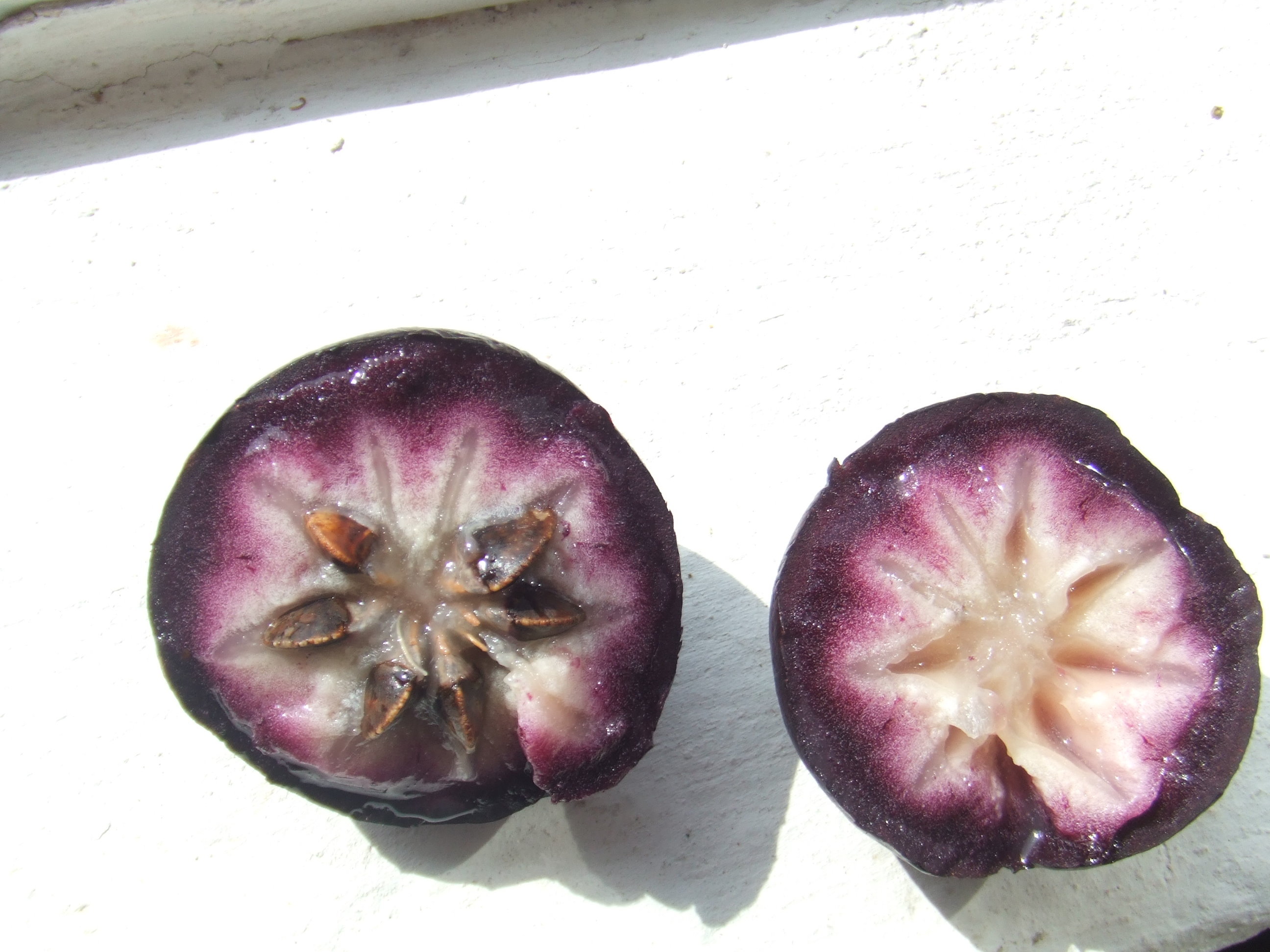Description
Cainito is a tropical tree of the family Sapotaceae. It is native to the Isthmus of Panama, where it was domesticated. It has spread to the Greater Antilles and the West Indies and is now grown throughout the tropics, including Southeast Asia. It grows rapidly and can reach a height range of 6 to 18 meters. There are two types found in Sri Lanka discernible by the colour of the fruit. One is purple while the other is green. The Wood is used for general indoor construction and used for fuel.
Planting requirements
Planting season: February to April
Planting conditions:
| Propagation | While seeds can be used, most successful propagation occurs through cuttings or grafting |
|---|---|
| Planting method | Direct seeding or budding. The seeds germinate easily and are viable for several months. Plant them about an inch deep in a small container kept outdoors. Once the seeds have established roots and are actively growing, you can transplant them into the ground or a larger container. If you chose to start with a sapling, it can be planted straight in the ground. Dig a hole that's 3 times wider and deeper than the root ball |
| Soil | well-drained, loamy soil with pH between 6.0 to 7.5. However, some sources suggest a slightly lower pH range of 5.5 to 6.5 |
| Water | Consistent deep watering is emphasized, which is crucial for the tree's health |
| Light | Requires full sunlight |
Growing conditions:
| Temperatures | 25-32°C. However, some sources indicate that the tree can tolerate temperatures as low as 22°C |
|---|---|
| Soil | Soil must be kept well drained |
| Water | Deep consistent watering |
| Pruning | It is necessary for keeping your plant at an ideal size. Because fruits don't fall off when ripe, maintain it at a height that you're able to harvest. Prune as needed every 1-3 years to keep it in shape. When the tree is mature, maintain a bush canopy, which will boost fruit production |
| Weed Control | Maintain a grass-free area 2 to 5 or more feet away from the trunk of the tree |
Harvesting
If grown from seed the Star Apple tree can produce fruit in about 4 years. But if you buy a sapling from a nursery that was grafted onto rootstock or propagated from a branch, it can grow fruit in as few as 1 to 2 years after planting.
Curing
Star Apple does not require a curing stage.
Storage
Star apples are best eaten when fresh but fruits can be stored in the refrigerator for up to two weeks.
Protecting your plants
Pest control
Pest type:
- Moth larvae
- Fruit Flies
- Aphids
Symptoms:
- Moth larvae: Attacks the flowers
- Fruit Flies: Infested fruits show signs of decay, small punctures on skin
- Aphids: Leaves may curl, yellow, or become distorted
Control method:
- Moth larvae: Use organic insecticides sparingly
- Fruit Flies: Use bait traps, maintain cleanliness, remove fallen fruit
- Aphids: Introduce natural predators like ladybugs, use insecticidal soap for severe infestations
Disease Control
Disease type:
- Red algae (Cephaleuros virescens)
- Various fungi (Phomopsis sp. and Phyllosticta sp.)
- Bacterial Canker
- Root Rot
Symptoms:
- Red algae: Causes stem and limb dieback
- Fungi: Leaf spots, wilting, premature leaf drop; fruit may dry-rot
- Bacterial Canker: Dark lesions on stems and branches, leading to dieback
- Root Rot: Yellowing leaves, stunted growth, and wilting
Management:
- Red algae: Regular monitoring and removal of affected branches, ensure good air circulation
- Fungi: Avoid overhead irrigation, maintain good air circulation, use fungicides when necessary, remove infected leaves
- Bacterial Canker: Prune affected areas, apply copper-based bactericides during growing season
- Root Rot: Improve drainage around root zone, avoid excessive watering, replant in severe cases
General practices:
- Regular monitoring
- Implement integrated pest management strategies
- Ensure proper spacing for airflow
- Maintain cleanliness around trees
Sources
In addition to our General List of Sources (link), we used these specific references:
